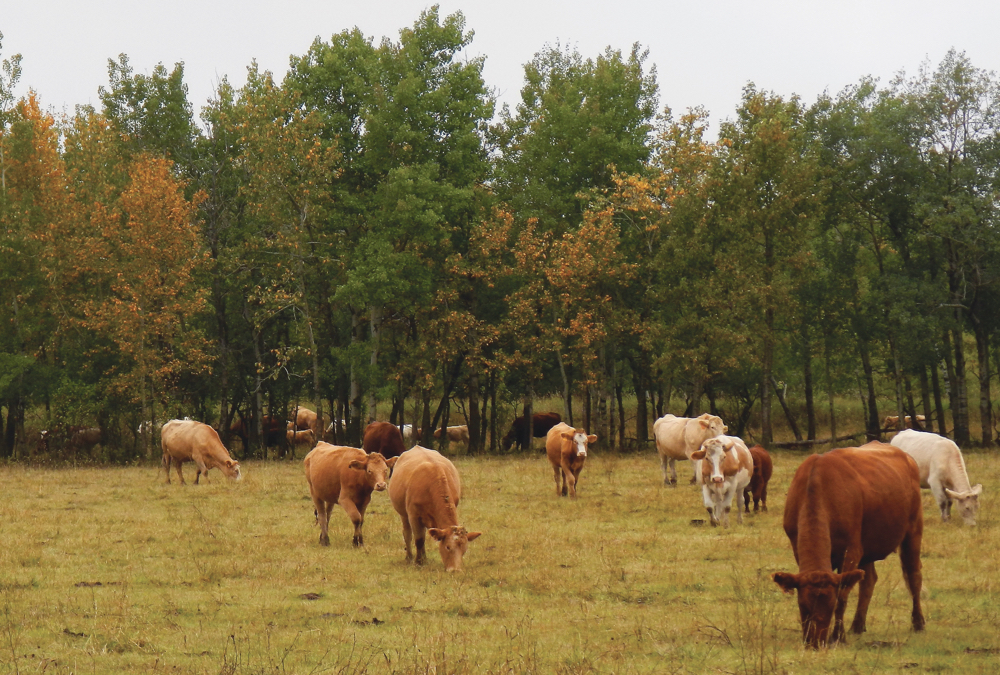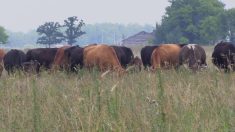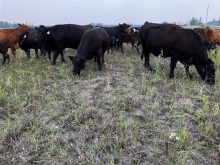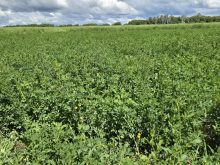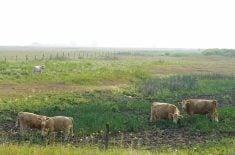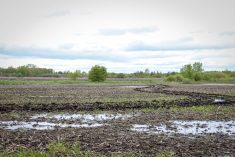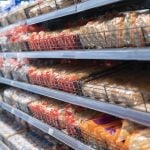Producers fighting a feed shortage will get some help from the province, Manitoba Agriculture Minister Ralph Eichler announced Sept. 30.
The province has been under pressure to help producers deal with yet another year of critically low feed and an expected heavy cull.
Why it matters: Producers with short feed have been in a holding pattern, first through the provincial election and then through the start of the federal election, but those producers finally got news of incoming provincial programs last week.
Read Also

Manitoba Ag Days 2026: Local businesses gear up for Brandon farm show
Most of agriculture is seemingly at Manitoba Ag Days each January: Manitoba agribusinesses and farm groups look forward to connecting with farmers at the 2026 show.
To date, 16 municipalities in the Parkland and Interlake have announced a state of agricultural disaster in the hopes of getting provincial response. The municipalities of Gilbert Plains, Glenella-Lansdowne, Rosedale and St. Laurent recently added their names to the dozen municipalities that announced a state of agricultural disaster in late August.
The province has asked MASC to look at deferring all direct loans for six months to help producers deal with the strain, “with a review of the uptake before the end of the sixth month to possibly extend for another six months to a year,” Eichler said.
“We’ll be prioritizing any requests that we do have for loan deferrals from those affected RMs and reviewing their financial situation with them to find the best solution to manage through any short-term cash flow issues,” MASC CEO Jared Munro said.
MASC has also opened the door for financing to purchase breeding stock and calves 400 pounds or up. Calf loans are to be repaid when that livestock is sold or at the end of the term (18 months for feeder animals and 12 months for breeding stock), “whichever comes first,” Eichler said.
Breeding stock loans will help farmers manage cash flow in the feed crisis, and will come with up to six months of interest-only payments, according to Eichler.
The province has also got approval to boost cash advances for AgriStability from 50 to 75 per cent.
“We know cash is tight for a number of these producers and we want to make sure that we have some of the tools in the tool box to help them through this tough time,” Eichler said.
Insurance changes
Forage insurance will be getting a sober second look in light of the province’s feed troubles. The province announced a review of AgriInsurance, targeted on forage, “to ensure it is meeting the needs of producers while advancing current payments to producers in a timely manner,” an email from the department read.
Eichler also encouraged producers to look at the Western Livestock Price Insurance Program to help them handle market volatility.
Producers waiting for the province to step up to the bat on AgriRecovery will be left waiting, the province confirmed Sept. 30.
Eichler said he is no longer considering AgriRecovery, something that both the 16 RMs under a state of agricultural disaster and Manitoba Beef Producers hoped would come into play.
The framework is difficult to administer, Eichler said, while the federal election has made the joint provincial-federal program difficult to pursue.
“The problem with AgriRecovery is that all taxpayers have to pay if we develop a program and what we do in Manitoba impacts Saskatchewan and impacts Alberta because it has that ripple effect… it’s not a budgetary item. It’s an item that we’d have to go to general rate payers and have them pay.”
Eichler argued that previous AgriRecovery programs, such as the feed freight assistance program introduced several years ago during the previous NDP government, did not function as desired.
“All it did was drive the price of hay up and the price of trucking,” he said.
Art Jonasson, reeve of the RM of West Interlake, said it’s disappointing news for both his area and the 15 other municipalities in a state of agricultural disaster.
Jonasson says the one-off nature of the program added to the province’s reluctance to request AgriRecovery.
“If the situation was worse next year, then we wouldn’t be able to use the AgriRecovery next year,” he says he was told. “We didn’t agree with that.”
Jonasson said he understands the program as a stop-gap measure in cases where existing programs fall short.
The six-month loan deferral may also have only modest uptake, he said. A year deferral has more chance of freeing up payments that might otherwise be used to purchase feed, he noted. The program will not help those who do not have MASC loans, he also said.
Eichler was, “sincerely concerned about the situation, but is struggling to find a way to help producers,” according to Jonasson.
Recent rains have greened up pastures in his area and allowed producers to cut back feeding, he said, although his community still expects to lose a lot of cattle to the auction mart before spring 2020 blooms.
Existing resources
Earlier this summer, the province opened up 185 parcels of Crown land for haying and grazing, an echo of a policy last year.
The program drew less uptake than hoped last year, something that the Manitoba Beef Producers later said was due to lack of accessibility to those parcels and lack of infrastructure on that land.
“We did meet with the Manitoba Beef Producers,” Eichler said. “It’s something that we’re looking at maybe making more of a permanent program to help impact forest fires and that type of thing. Quite frankly, some of the wildlife management areas have been overgrown and trees started growing in and that made it a little harder to hay and we certainly don’t want that.”
A more permanent program would help fast track producer access to those lands if the province sees another tough feed year, he added.
The province, Manitoba Beef Producers and organizations like the Manitoba Forage and Grassland Association are still calling on producers to list any available hay for sale.
Feed testing, ration planning and early weaning are all also getting a push from the province, while the province has pointed to funding this year for water source development like digging dugouts or drilling wells through Ag Action Manitoba.


